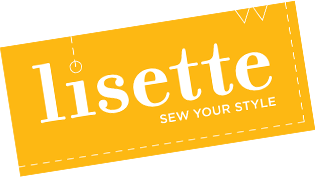I had intended to mention this “Right Size Measurement Fitting Chart” from Nancy Zieman’s Pattern Fitting with Confidence when I wrote about the book earlier this week.
Initially I was sceptical that this approach would work. But I tried it, and it is very accurate. Here’s an image from the book:
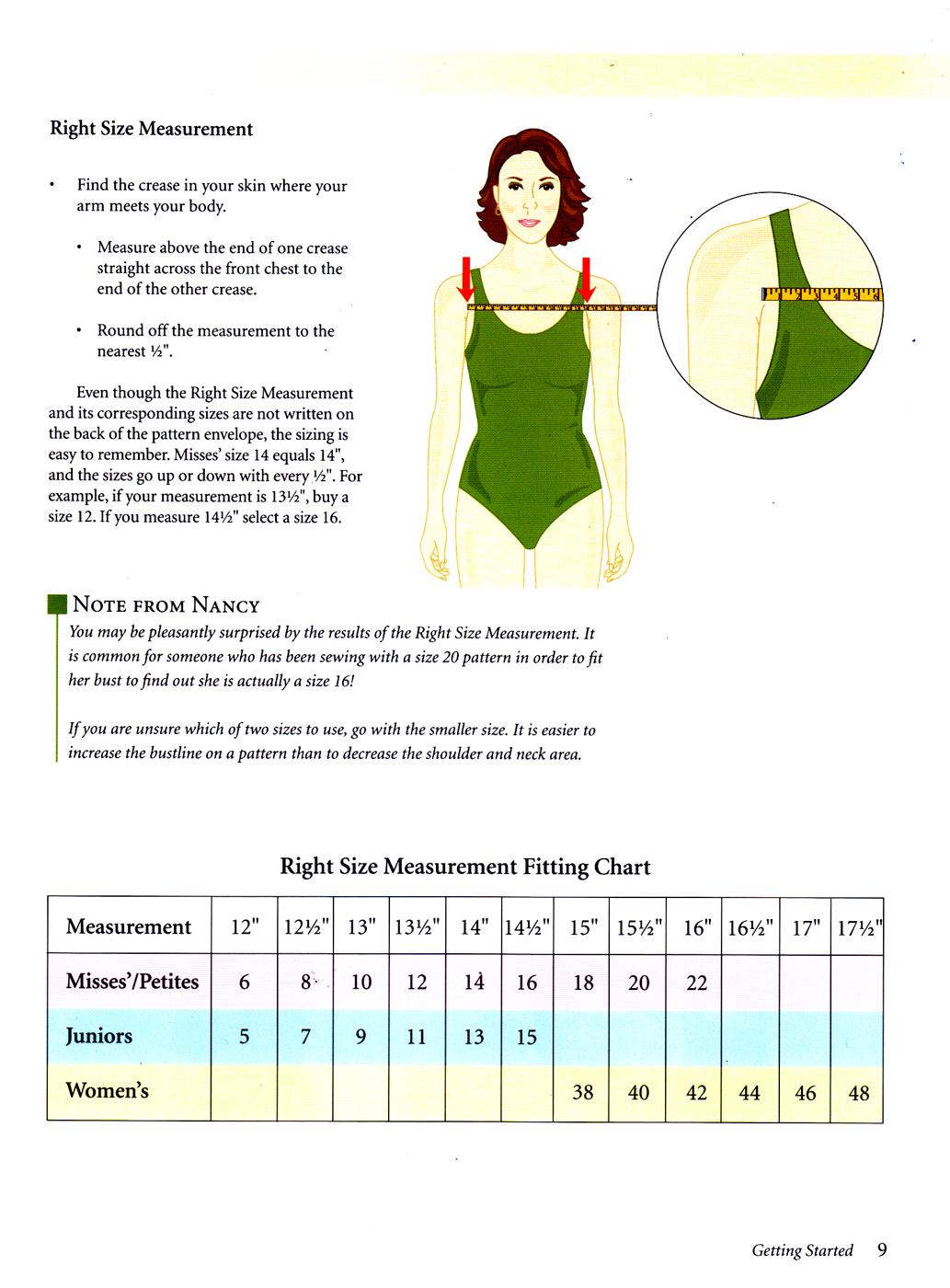
Right Size Measurement from Nancy Zieman's Pattern Fitting with Confidence, Click to Enlarge
A couple of things to point out:
- You’ll want to have someone take this measurement for you, since it’s nearly impossible to take this measurement accurately yourself. You might even want to have a friend measure you twice to be sure it’s correct.
- Lisette patterns are drafted for a B-cup figure. If your bust is larger or smaller, you’ll need to adjust the patterns accordingly. This is one place where the books I’ve been blogging about will be helpful to you.
Another useful resource you might be interested in is the Simplicity Fit Guide. You can download it as a free PDF from the Simplicity website.
I’ll be curious to hear what you find. Have you been sewing the correct size?
I promised to show you another book about fitting and alterations a while ago, and then we got so busy over the spring that all blog posts got pushed to the side for a while. But here it is, at long last.
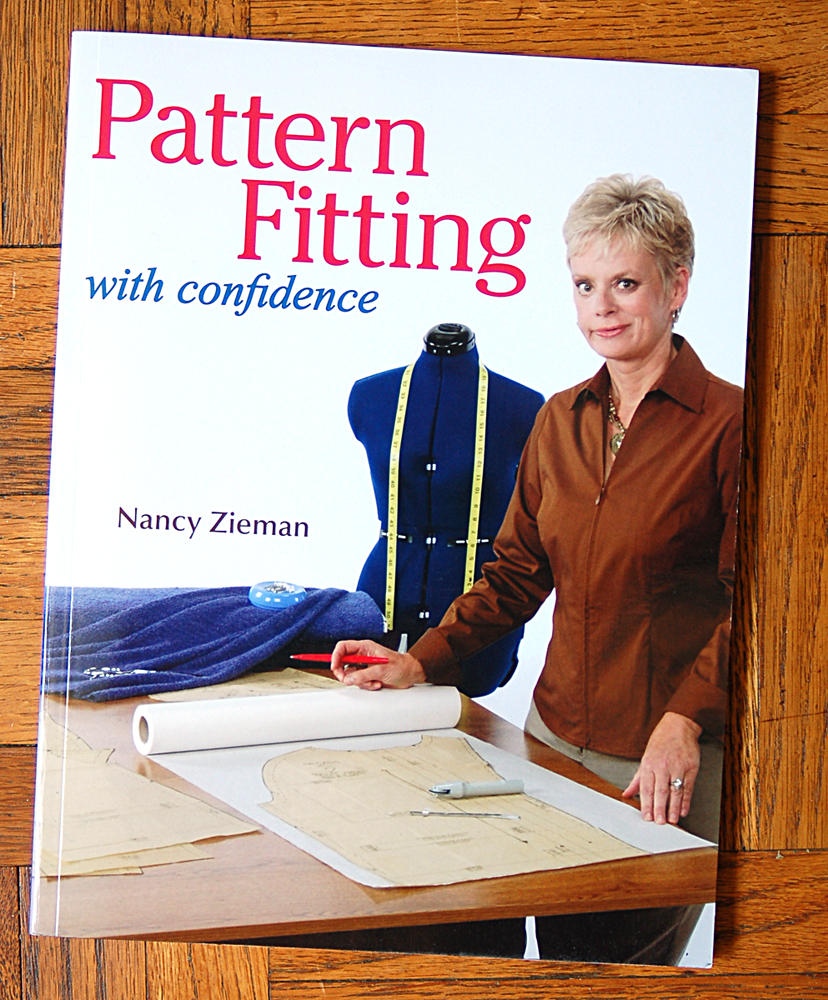 Pattern Fitting with Confidence is a Nancy Zieman book (you almost certainly know Nancy or have heard of her from her popular PBS show, “Sewing With Nancy“) published in 2009. You’ll notice right away that the inside of the book looks more contemporary and attractive than our previously reviewed favorite, Fit for Real People, with illustrations instead of photographs that look out-of-date quickly. Another advantage of using illustrations is that it can demonstrate the tell-tale signs of a poor fit more clearly than a photograph. Puckers and lines are very well-defined in the illustrations and can help you to identify where your own fit problems come from. Fit issues can sometime be deceiving, so it helps to have a guide like this to help establish whether the issue is–for example, broad shoulders or square shoulders. A good illustration can help to clarify the real source of the issue.
Pattern Fitting with Confidence is a Nancy Zieman book (you almost certainly know Nancy or have heard of her from her popular PBS show, “Sewing With Nancy“) published in 2009. You’ll notice right away that the inside of the book looks more contemporary and attractive than our previously reviewed favorite, Fit for Real People, with illustrations instead of photographs that look out-of-date quickly. Another advantage of using illustrations is that it can demonstrate the tell-tale signs of a poor fit more clearly than a photograph. Puckers and lines are very well-defined in the illustrations and can help you to identify where your own fit problems come from. Fit issues can sometime be deceiving, so it helps to have a guide like this to help establish whether the issue is–for example, broad shoulders or square shoulders. A good illustration can help to clarify the real source of the issue.
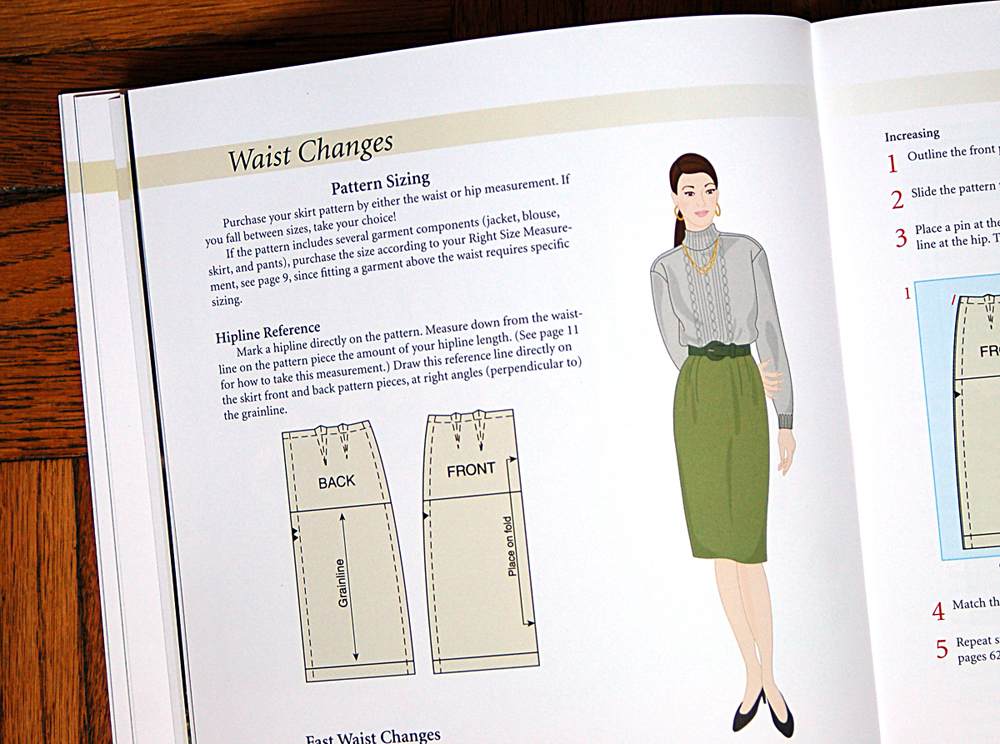 This book takes a very different approach to fitting than Fit for Real People. I would describe it as a flat pattern approach that is similar to manipulations used in patternmaking. For each issue, a series of illustrations and instructions explain how to trace and adjust the pattern without altering the original pattern pieces themselves, giving you a new, adjusted pattern piece. You’ll still need to make a muslin in order to check the fit and probably to determine which adjustments need to be made before you begin to correct the pattern, but you won’t be altering your original pattern pieces. Instead, you make new, corrected pieces by trading and manipulating the original pattern pieces.
This book takes a very different approach to fitting than Fit for Real People. I would describe it as a flat pattern approach that is similar to manipulations used in patternmaking. For each issue, a series of illustrations and instructions explain how to trace and adjust the pattern without altering the original pattern pieces themselves, giving you a new, adjusted pattern piece. You’ll still need to make a muslin in order to check the fit and probably to determine which adjustments need to be made before you begin to correct the pattern, but you won’t be altering your original pattern pieces. Instead, you make new, corrected pieces by trading and manipulating the original pattern pieces.
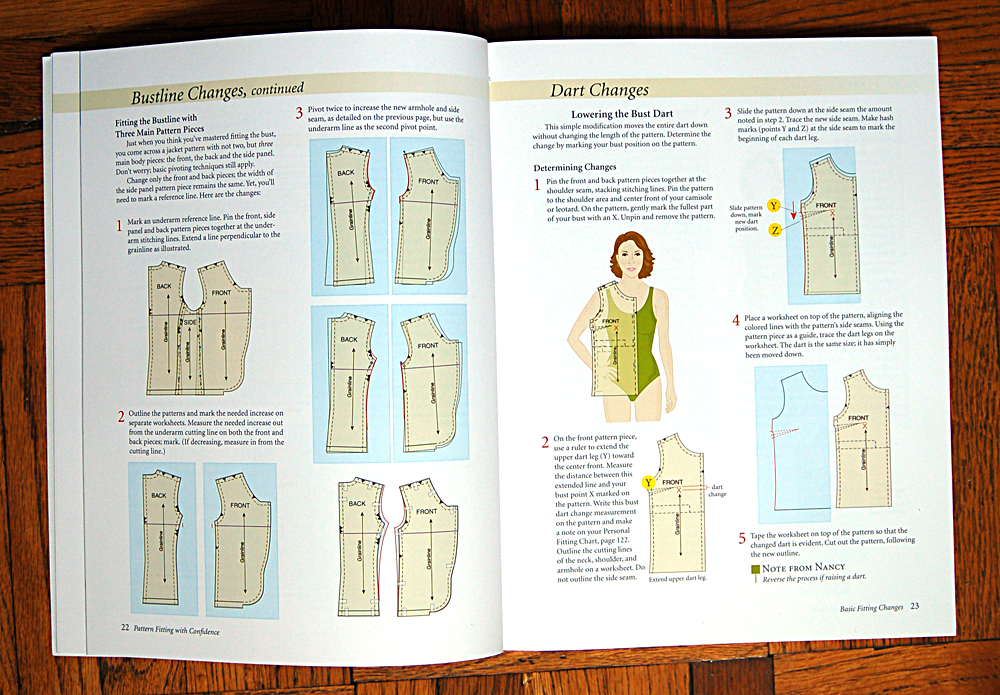 I like the techniques used in this book and think it’s a very clear guide for making adjustments. This is a straight-forward method that can serve as a quick reference as well as a more in-depth workbook. Personally, I would probably use a combination of the techniques in this book with the more immediate (but messier and doesn’t preserve your original pattern) alterations in Fit for Real People.
I like the techniques used in this book and think it’s a very clear guide for making adjustments. This is a straight-forward method that can serve as a quick reference as well as a more in-depth workbook. Personally, I would probably use a combination of the techniques in this book with the more immediate (but messier and doesn’t preserve your original pattern) alterations in Fit for Real People.
I would be curious to hear what your experiences with these books are. Have you tried either or both of them, and do you have a favorite? Has one technique worked better for you than another?
Interested in sewing the Lisette Portfolio Dress, but need a little inspiration and companionship to help you get going? Here’s an opportunity you won’t want to miss.

Chris from Pickup Some Creativity and Gwen from Gwenny Penny are hosting a Portfolio Dress Sew Along which begins next Monday, April 25.
You can find all the details here and here.
Now that spring 2011 Lisette fabrics are in all Jo-Ann stores across the United States, I thought it would be nice to give you a little introduction to the various fabric qualities that are available.
All of the fabrics are 100% cotton, except for the chambray which is a cotton/poly blend. And because this collection has been designed from the ground up as a true apparel sewing collection (rather than a quilting collection that can be used for apparel), we’ve been able to offer a variety of weights and weaves that lend themselves nicely to apparel sewing.
Moving from heaviest to lightest in terms of weight, the first quality is the twill, which I think you’ll agree is a really nice quality with a great hand. It’s substantial and supple enough to be used for jackets, skirt and pants and has a wonderful smooth finish.
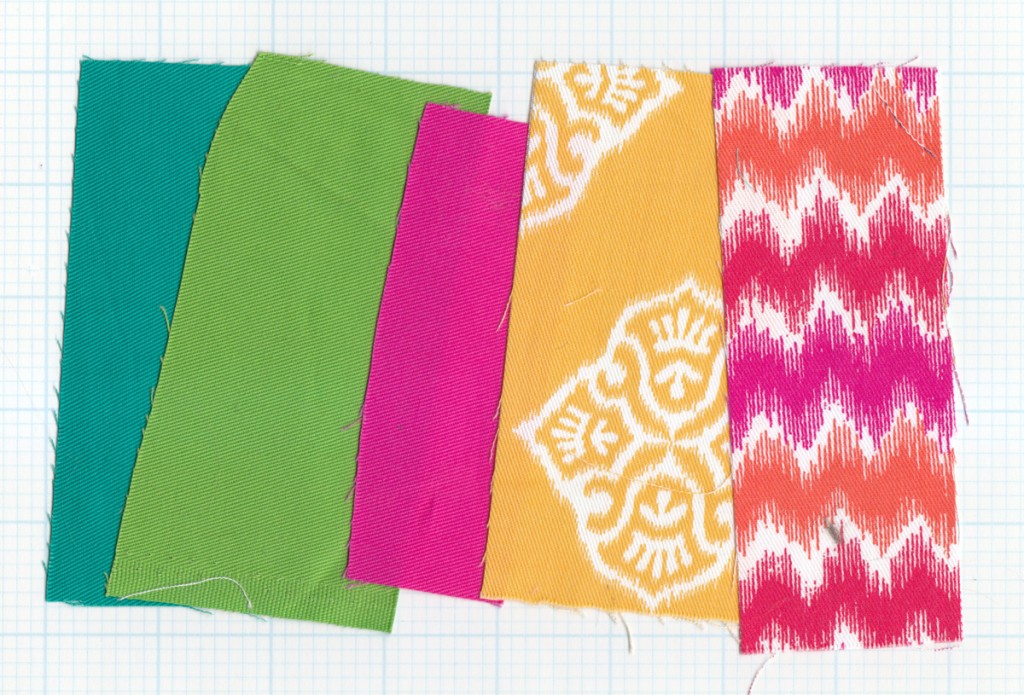
Next is one of my favorite fabrics in this collection, a lightweight canvas. Don’t let that word throw you off; this canvas is drapey and really works beautifully for pants, skirts, and jackets. I think it’s especially nice for the Passport Jacket, but it would also be wonderful for the Market Skirt, the Traveler Dress, and the Portfolio Pants.
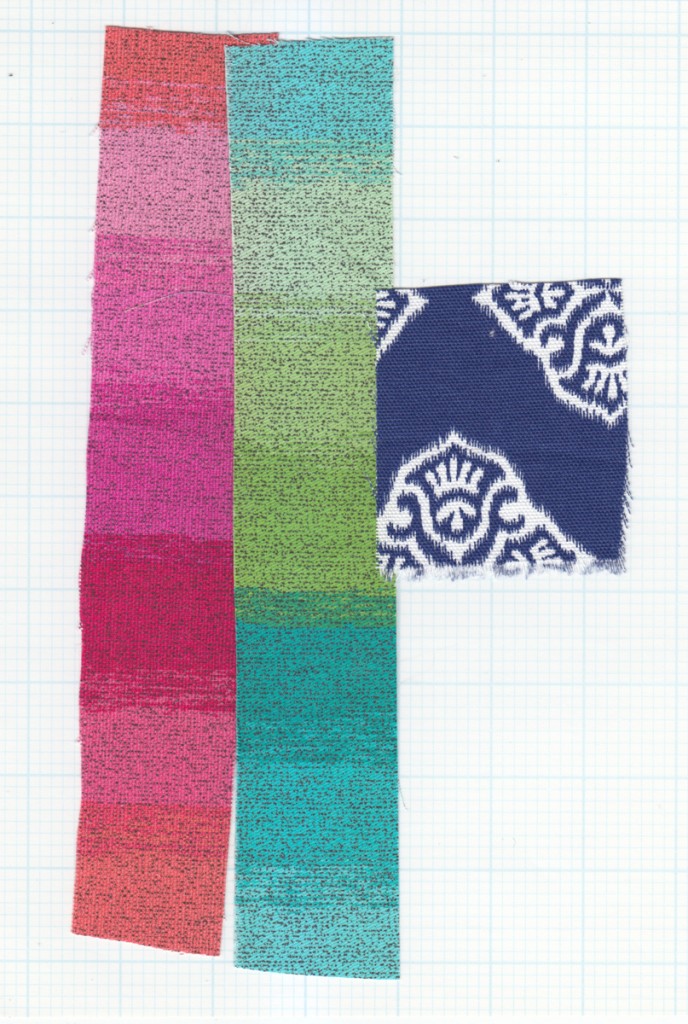
The chambray obviously makes a great Traveler Dress but would be equally suitable for the Portfolio Pants, the Market Skirt, the also the Portfolio Dress. It comes in an indigo and in black/gray. I use a lot of chambray when I sew, and I think of it as a basic fabric because it can be used for so many things.
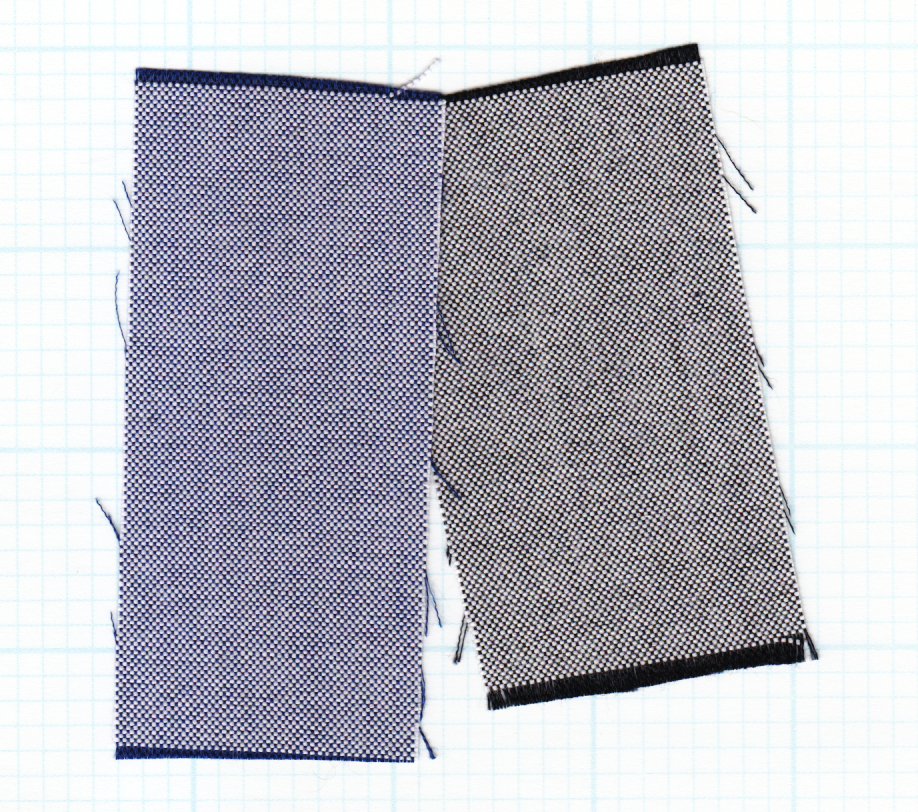
The poplin has a crisp, poplin-y hand, just as you would expect. I think it makes great tunics, blouses, and dresses. I like it because it has lots of body and not a lot of drape, so it works nicely for the pleats in the Passport Dress, as well as the Market Tunic or Blouse and all versions of the Portfolio Dress and the Traveler Dress.
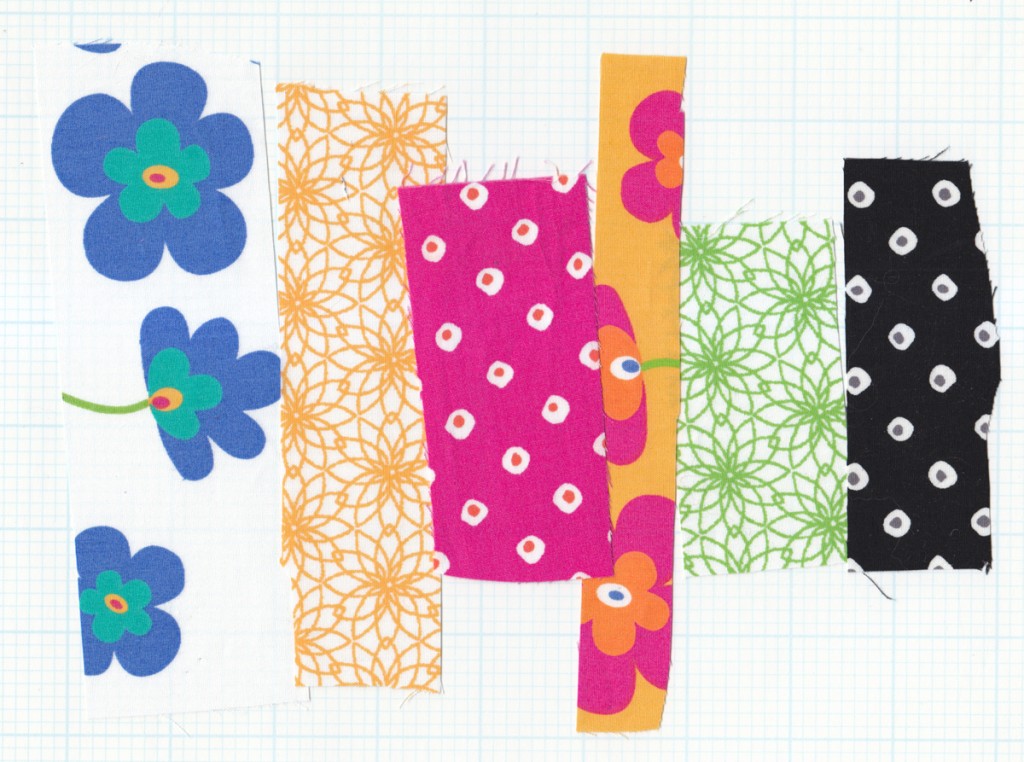
The sateen is another fabric I really love. This weight is perfect for dresses and blouses. It’s very drapey, soft, smooth, and has a beautiful luster.
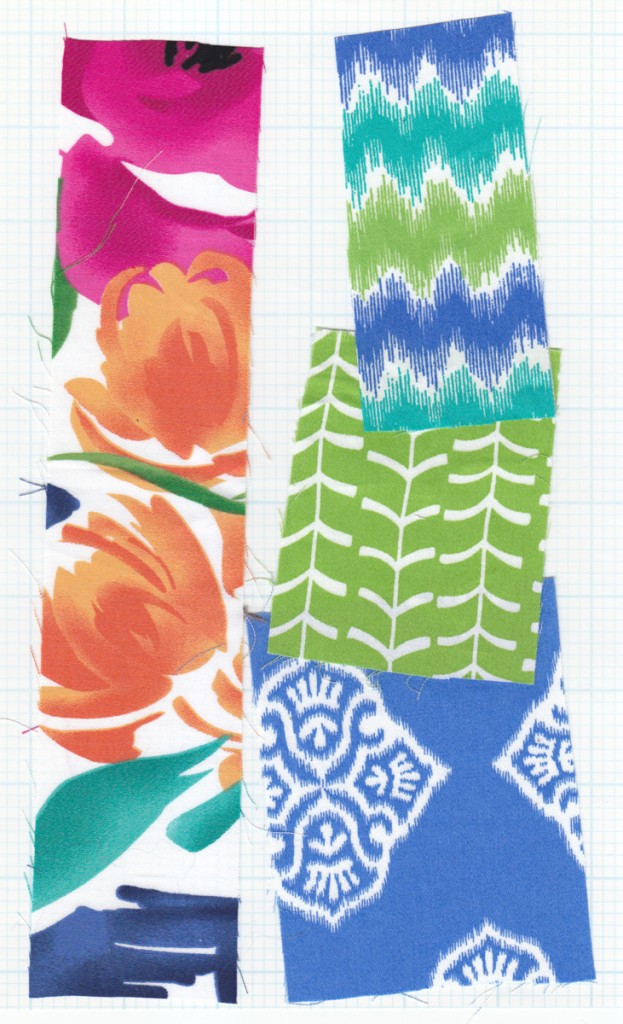 Many of you have already discovered and commented on the lawn. It’s lightweight and slightly sheer and makes beautiful blouses. It can also be lined for dresses.
Many of you have already discovered and commented on the lawn. It’s lightweight and slightly sheer and makes beautiful blouses. It can also be lined for dresses.
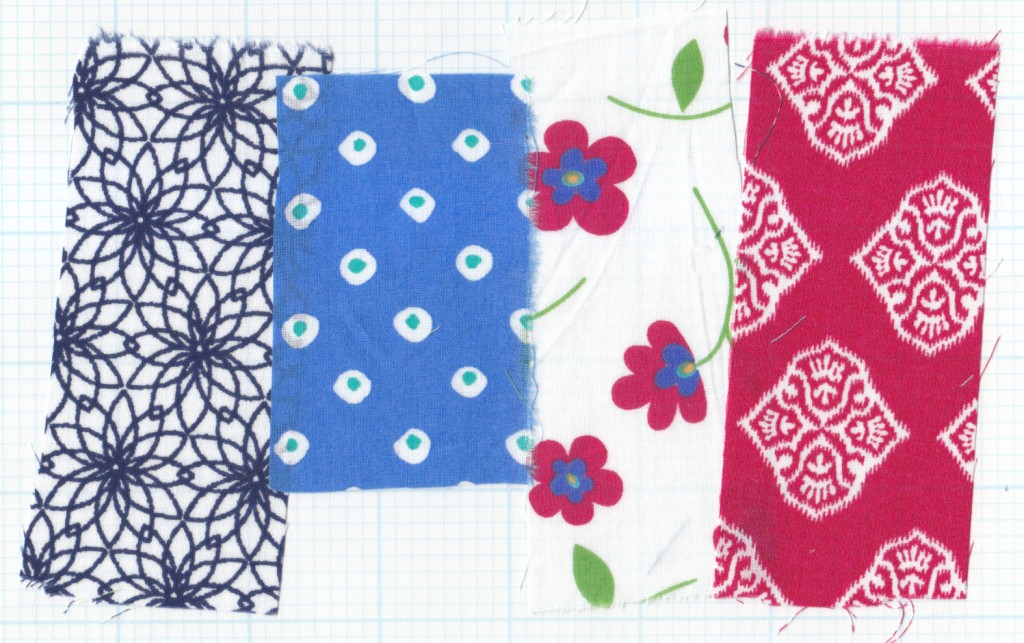
I hope you’ll enjoy these fabric. I’d love to see what you make from them. Be sure to post your creations in the Lisette Flickr group.
You’ve been asking questions and are eager to see more views from the spring Lisette patterns. So here we go.
We made these samples to test the patterns when we were writing the instructions, so you’ll see that they haven’t been fit perfectly to me. I hope, however, these photos will let you see some of the details and additional views or options offered in each pattern. And let’s just say up front that I’m no professional model and don’t feel terribly comfortable in front of the camera, so be gentle with me, ok?
With all that said, here are the photos.
This is the Passport dress made from a heavy cotton. We were testing a few options for the darts when we made this dress, so if you look closely (please don’t look too closely) the darts are uneven. They won’t be uneven on your dress. Obviously, when I make this dress for myself I’ll need to add some length in the torso. And I don’t have much in the way of a bust, so adjustments will be made in that area, too.
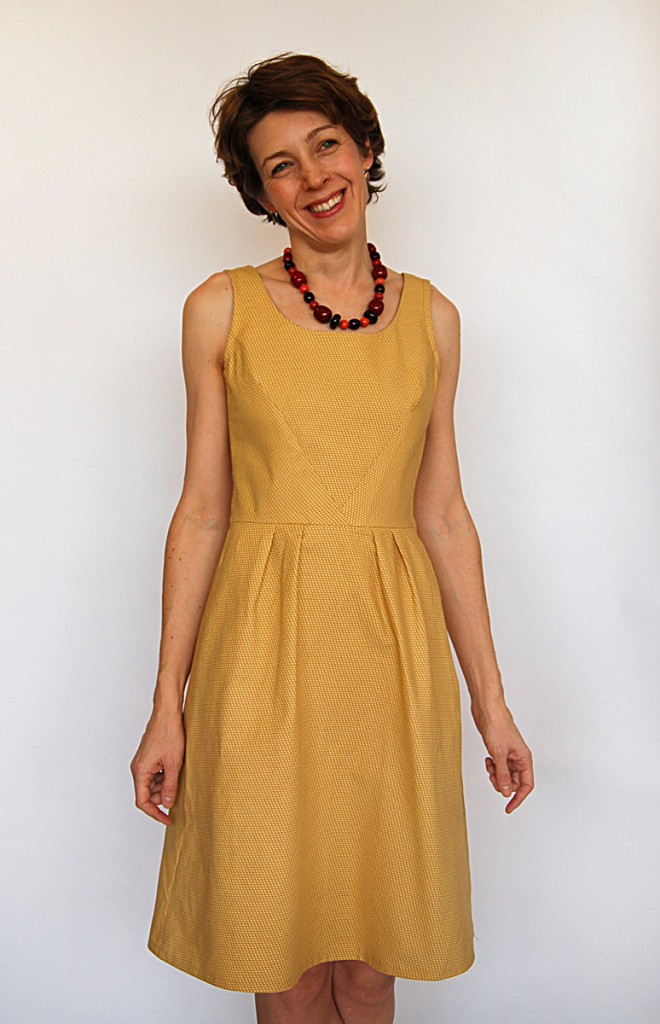
This Passport jacket is made from a heavy cotton herringbone fabric.
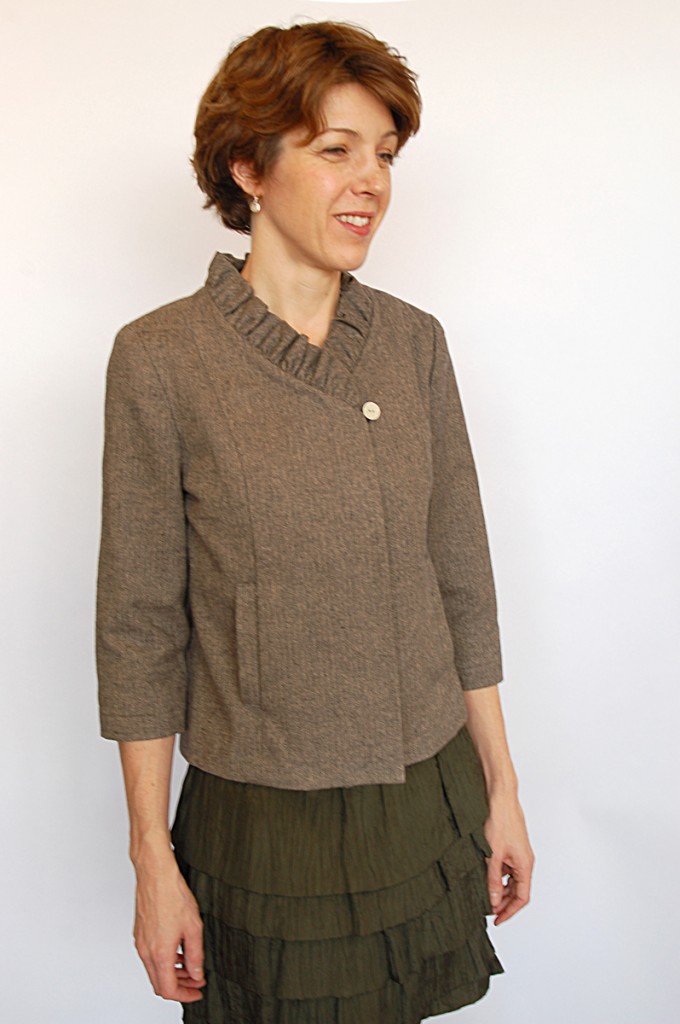
Here is the Market tunic made from iridescent silk dupioni. When I make this for myself I’ll add 2″ to the length and 1″ to the sleeves to accomodate my proportions.
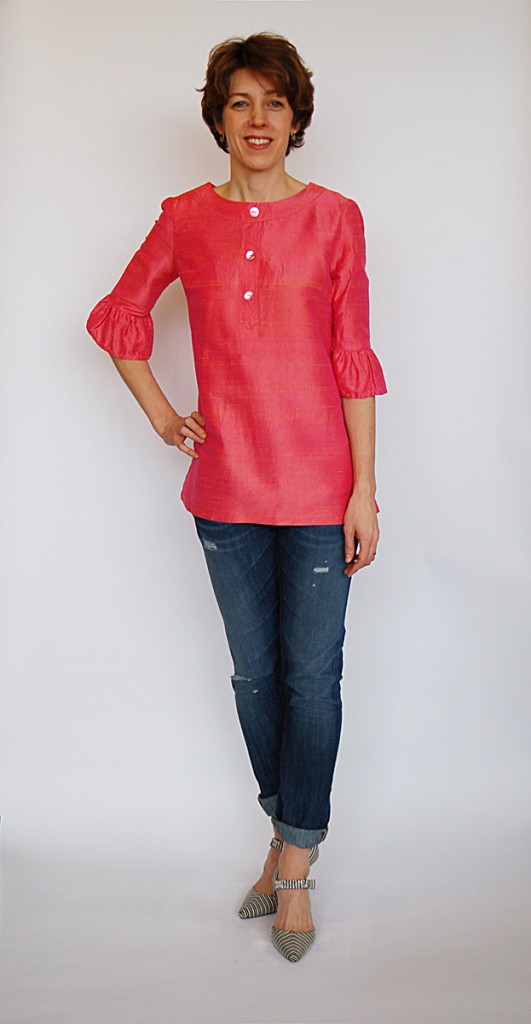
This is the Market skirt in View A with kick pleats and button tabs, made from a yarn-dyed cotton ticking.
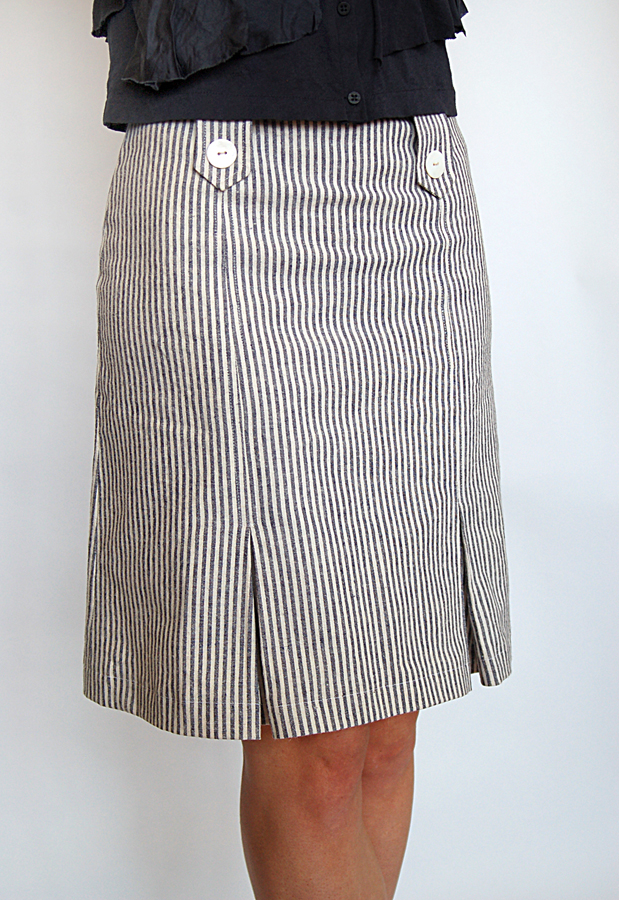
And I’ve told you I like the Traveler dress as a tunic and a dress. Here is the tunic length with the band collar, including the pockets from View A and worn without the belt.
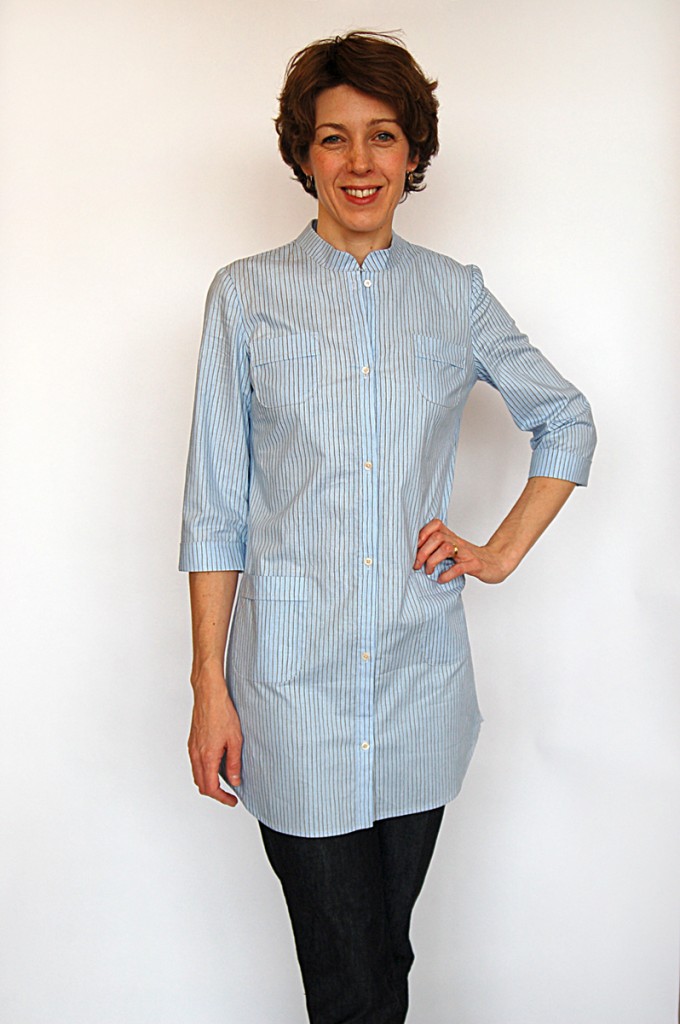
Here is View B, the more fitted dress.
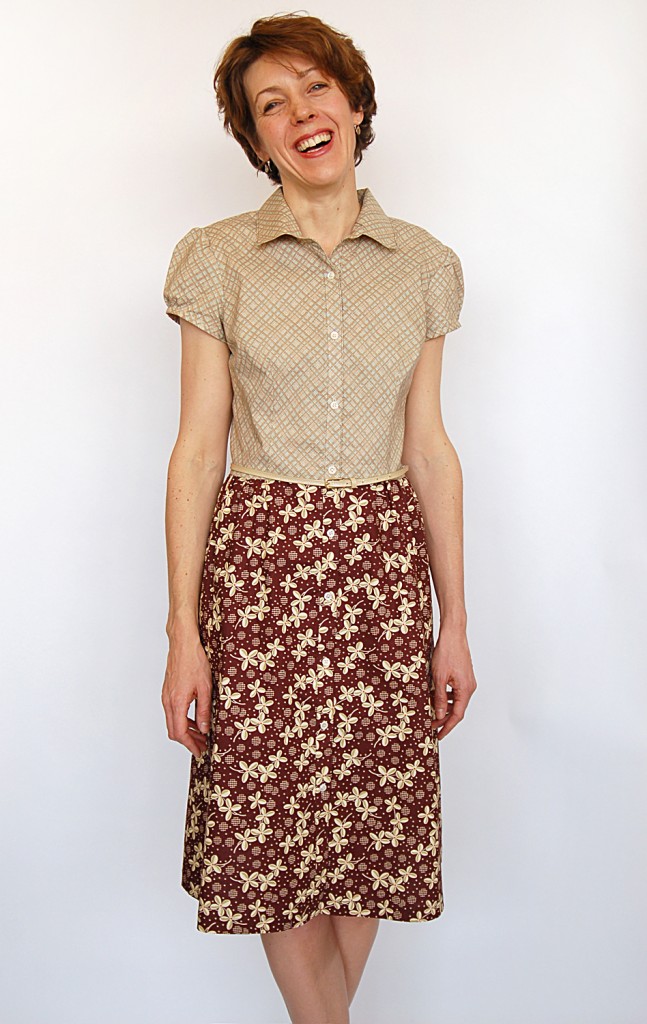
This is what I plan to wear all spring and summer: the Portfolio tunic.
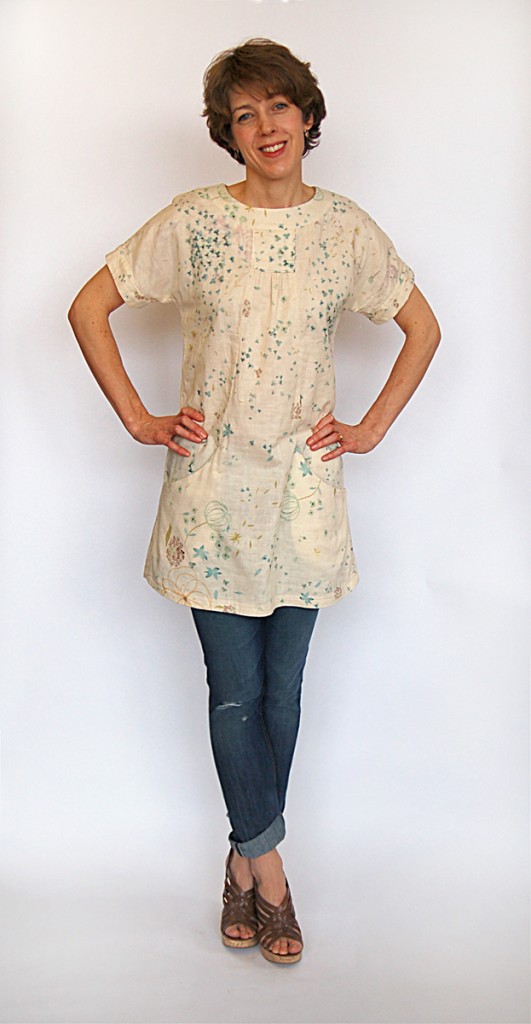
And here is the Portfolio dress.
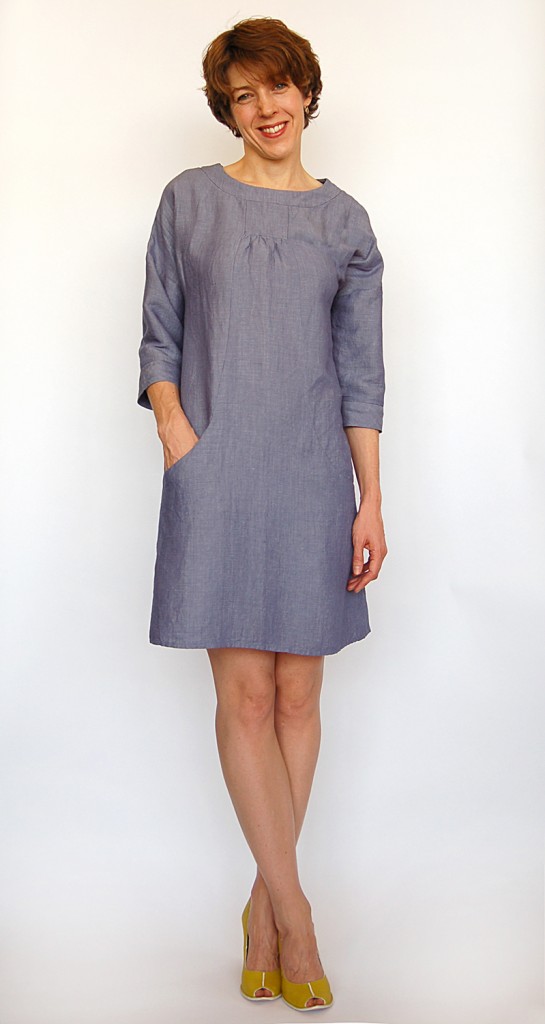
I hope these photos help you visualize what you can do with the patterns and inspire you to start planning some new spring and summer pieces for yourself.
I’m looking forward to seeing how you make these styles your own. When you’ve sewn a Lisette style, why don’t you join those who have already started and post a photo to the Lisette Flickr group. It’s always great to see the results of what everyone is making.
One topic that always come up when women are sewing for themselves is altering patterns to provide the perfect fit. With that in mind, I went looking for books about pattern fitting to suggest to you.
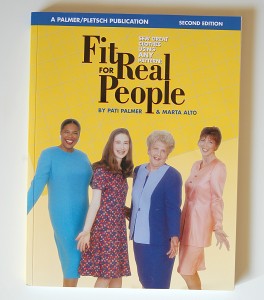 Fit for Real People, by Pati Palmer and Marta Alto, is a great resource that I can recommend with confidence.
Fit for Real People, by Pati Palmer and Marta Alto, is a great resource that I can recommend with confidence.
Don’t let the outdated photographs throw you off. This book was originally published in 1998 and looks it. But there’s a very good reason why it’s still in print. It’s an excellent guide that I think you’ll find to be very valuable and useful as you sew.
You’ll find a tremendous amount of background information in this book. As Palmer explains in the foreward, “the pattern is the manuscript; YOU are the editor!” This book will help you to customize sewing patterns to fit your body and preferences. It includes a very interesting chapter on pattern sizing that explains what a size 10 really means, how pattern sizing has changed (and not changed) over time, and the relationship between ready-to-wear clothing sizes and sewing pattern sizes. It demonstrates the difference between girls’ and misses’ sizing and explains why different patterns include different amounts of ease. I learned several bits of useful pattern trivia myself that will come in handy at my next sewing-pattern-related cocktail party conversation. (And you might be surprised how many people want to talk about sewing patterns when I tell them what I do.)
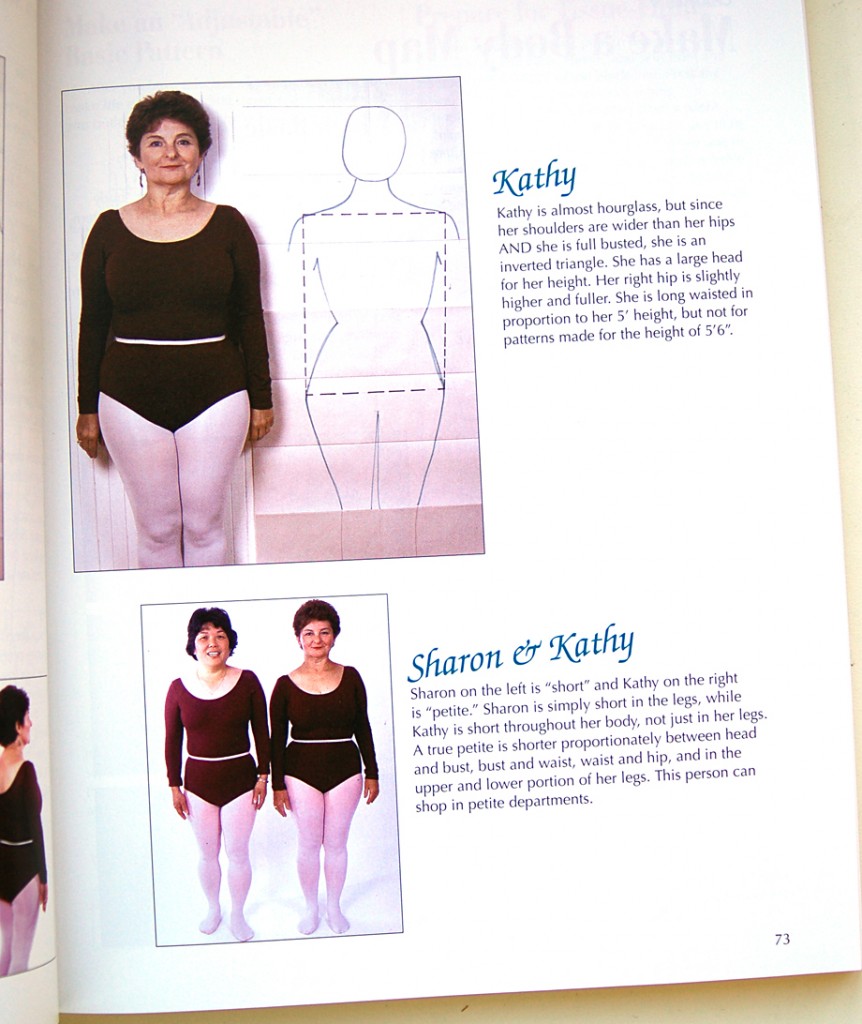 Before you even begin to fit patterns to your own body and preferences, the book demonstrates how you can create a body graph to really evaluate your body shape and help you to determine the changes you’ll need to make to a pattern. The body graph will also help you to determine what styles will look best on your body. I’ve never done this but am determined to try it now that I’ve read this chapter. You certainly don’t have to do this in order to make use of the book, but I think it would be very informative not just for sewing, but for making smart shopping decisions with ready-to-wear clothing as well. You’ll have a much better sense of which silhouettes and proportions are flattering to your body, and how to camouflage the parts you’d rather not highlight.
Before you even begin to fit patterns to your own body and preferences, the book demonstrates how you can create a body graph to really evaluate your body shape and help you to determine the changes you’ll need to make to a pattern. The body graph will also help you to determine what styles will look best on your body. I’ve never done this but am determined to try it now that I’ve read this chapter. You certainly don’t have to do this in order to make use of the book, but I think it would be very informative not just for sewing, but for making smart shopping decisions with ready-to-wear clothing as well. You’ll have a much better sense of which silhouettes and proportions are flattering to your body, and how to camouflage the parts you’d rather not highlight.
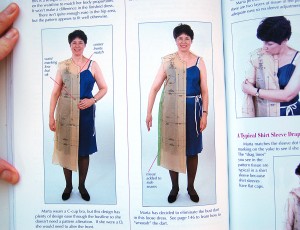 For fitting itself, this book shows you how to “tissue fit” the pattern tissue itself, making adjustments to the pattern before you even cut out your fabric. This may sound unusual, but it can be very effective and save you additional steps down the road. If you prefer not to tissue fit or need to see how your fabric drapes in order to get a better sense of the fit, you could certainly apply these same methods to a muslin/toile or to a tracing of the pattern. And for those of you who don’t like to make a muslin, you’ll probably really enjoy the efficiency of this method!
For fitting itself, this book shows you how to “tissue fit” the pattern tissue itself, making adjustments to the pattern before you even cut out your fabric. This may sound unusual, but it can be very effective and save you additional steps down the road. If you prefer not to tissue fit or need to see how your fabric drapes in order to get a better sense of the fit, you could certainly apply these same methods to a muslin/toile or to a tracing of the pattern. And for those of you who don’t like to make a muslin, you’ll probably really enjoy the efficiency of this method!
The most valuable sections of the book show how to make almost any adjustment or alteration you can imagine. If you have a full bustline, no bustline, sloped shoulders, wide hips, etc., you’ll find instructions, photos and diagrams showing how to make those changes to your pattern or muslin.
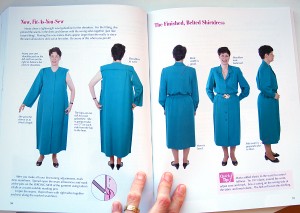 Once you’ve made initial adjustments, you move on to fitting the garment itself as you sew it. This will allow you to work with the fabric itself, since fabric qualities drape and hang differently. For example, one fabric may have a good deal of stretch or give in the width (the warp), and if you were to make a skirt from it the finished skirt would be too wide. By fitting as you sew, you can make adjustments as you progress. You’ll be much happier with the finished garment, so although this method might take a little more time than just sewing it up without fitting, in the end I think you’ll be happy you did it. (And you’ll actually wear the finished result rather than pushing it to the back of our closet.)
Once you’ve made initial adjustments, you move on to fitting the garment itself as you sew it. This will allow you to work with the fabric itself, since fabric qualities drape and hang differently. For example, one fabric may have a good deal of stretch or give in the width (the warp), and if you were to make a skirt from it the finished skirt would be too wide. By fitting as you sew, you can make adjustments as you progress. You’ll be much happier with the finished garment, so although this method might take a little more time than just sewing it up without fitting, in the end I think you’ll be happy you did it. (And you’ll actually wear the finished result rather than pushing it to the back of our closet.)
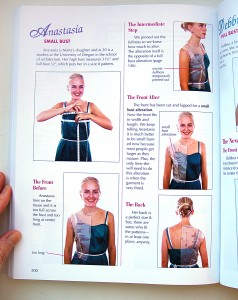 Toward the back of the book you’ll also find a sort of “case study” using real people to demonstrate the principles of fitting. These photos are extremely valuable, since diagrams and illustrations can’t always give you a real sense of what you’ll be seeing when you fit yourself or a friend. The photos clearly show what changes were made and how those changes improve the fit.
Toward the back of the book you’ll also find a sort of “case study” using real people to demonstrate the principles of fitting. These photos are extremely valuable, since diagrams and illustrations can’t always give you a real sense of what you’ll be seeing when you fit yourself or a friend. The photos clearly show what changes were made and how those changes improve the fit.
The final chapter includes a reference of sewing techniques that can also help to improve the fit of a garment.
When you sew for yourself, it’s important to have a good reference book like this on hand. It will save you hours, and possibly a great deal of frustration, knowing that the answers to your fit questions are demonstrated and explained. I’ll be curious to hear what you think of it, and I’ll show you some additional books about fitting soon, too.
← Older posts Newer posts →
